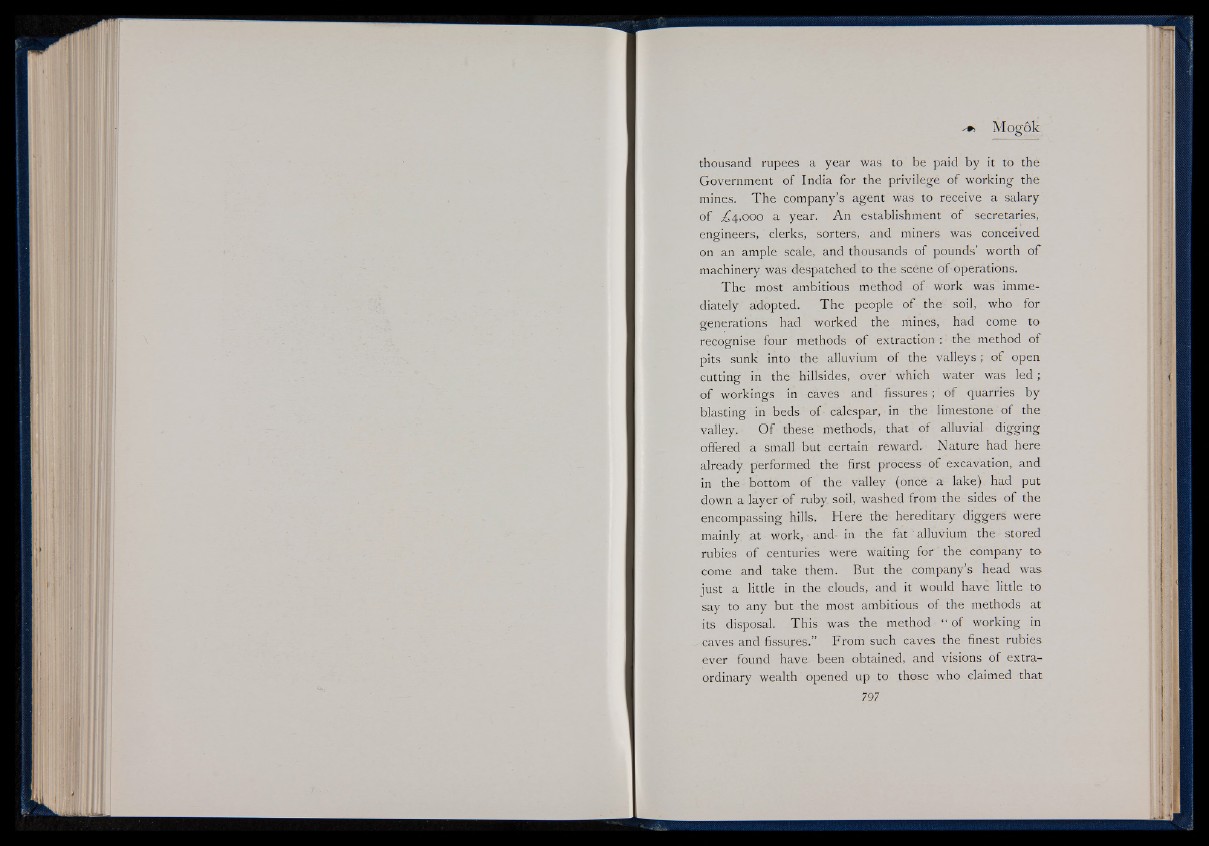
-■*> Mog6k
thousand rupees a year was to be paid by it to the
Government of India for the privilege of working the
mines. The company’s agent was to receive a salary
of ^4,000 a year. An establishment of secretaries,
engineers, clerks, sorters, and miners was conceived
on an ample scale, and thousands of pounds’ worth o f
machinery was despatched to the scene of operations.
The most ambitious method of* work was immediately
adopted. The people of the sbil, who for
generations had worked the mines, had come to
recognise four methods of extraction : the method of
pits sunk into the alluvium of the valleys; of open
cutting in the hillsides, over which water was led ;
of workings in caves and fissures; of quarries by
blasting in beds of calcspar,»in the limestone of the
valley. Of these methods, that of alluvial digging
offered a small but certain reward.- Nature had here
already performed the first process of excavation, and
in the bottom of the valley (once a lake) had put
down a layer of ruby soil, washed from the sides of the
encompassing hills. Here the-* hereditary diggers were
mainly at work, and in the fat alluvium the* stored
rubies of centuries were waiting for the company to
come and take them. But the company’s head was
just a little in the clouds, and it would have little to
say to any but the most ambitious of the methods at
its disposal. This was the method “ of working in
caves and fissures.” From such caves the finest rubies
ever found have been obtained, and visions of extraordinary
wealth opened up to those who claimed that